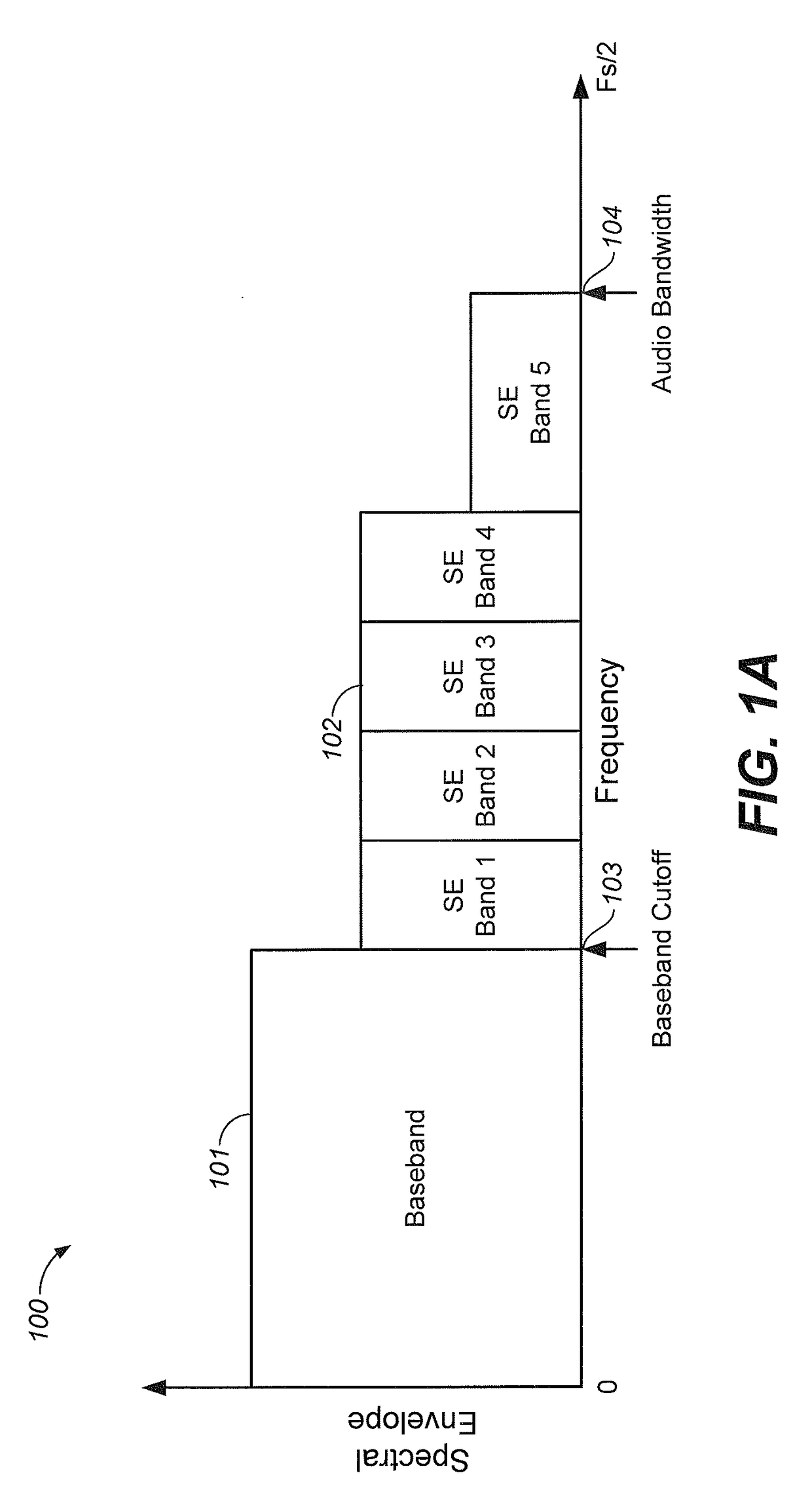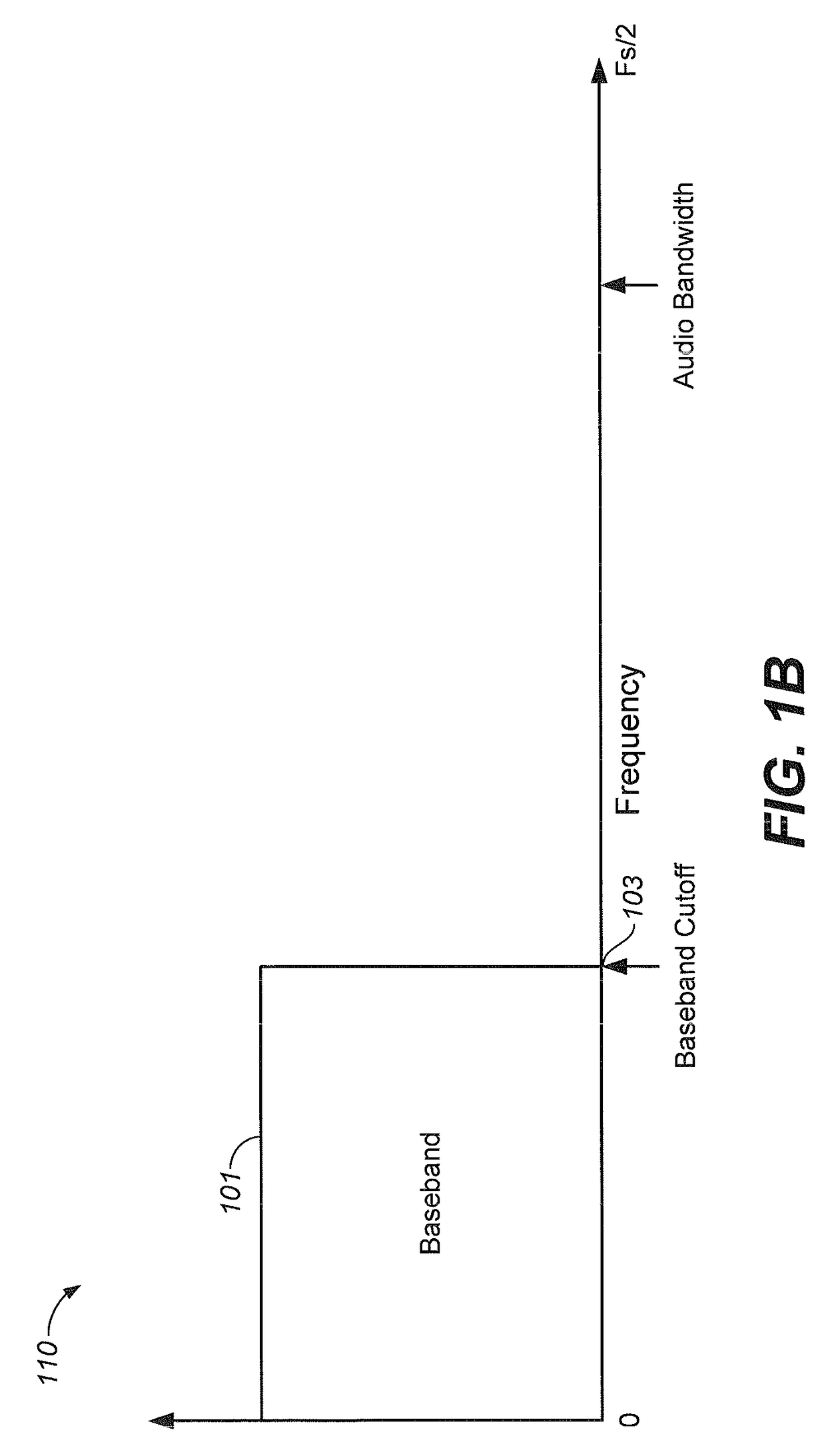Methods and systems for efficient recovery of high frequency audio content
a high-frequency audio and audio content technology, applied in the field of audio coding, decoding and processing, can solve the problems of significant computational complexity in the determination of the side information in the spx based audio encoder, and the bandwidth of the audio signal to be encoded may be limited, so as to reduce the computational complexity of the spx based encoder, the effect of reducing the computational complexity
- Summary
- Abstract
- Description
- Claims
- Application Information
AI Technical Summary
Benefits of technology
Problems solved by technology
Method used
Image
Examples
Embodiment Construction
[0054]FIGS. 1a, 1b, 1c and 1d illustrate example steps performed by an SPX based audio encoder. FIG. 1a shows the frequency spectrum 100 of an example audio signal, wherein the frequency spectrum 100 comprises a baseband 101 (also referred to as low frequency band 101) and a high frequency band 102. In the illustrated example, the high frequency band 102 comprises a plurality of subbands, i.e. SE Band 1 up to SE Band 5 (SE, Spectral Extension). The baseband 101 comprises the lower frequencies up to the baseband cutoff frequency 103 and the high frequency band 102 comprises the high frequencies from the baseband cutoff frequency 103 up to the audio bandwidth frequency 104. The baseband 101 corresponds to the spectrum of a low frequency component of the audio signal and the high frequency band 102 corresponds to the spectrum of a high frequency component of the audio signal. In other words, the low frequency component of the audio signal comprises the frequencies within the baseband 1...
PUM
 Login to View More
Login to View More Abstract
Description
Claims
Application Information
 Login to View More
Login to View More - R&D
- Intellectual Property
- Life Sciences
- Materials
- Tech Scout
- Unparalleled Data Quality
- Higher Quality Content
- 60% Fewer Hallucinations
Browse by: Latest US Patents, China's latest patents, Technical Efficacy Thesaurus, Application Domain, Technology Topic, Popular Technical Reports.
© 2025 PatSnap. All rights reserved.Legal|Privacy policy|Modern Slavery Act Transparency Statement|Sitemap|About US| Contact US: help@patsnap.com



